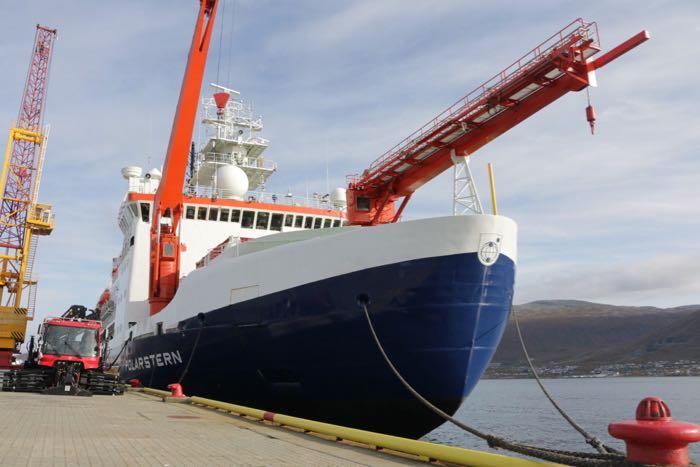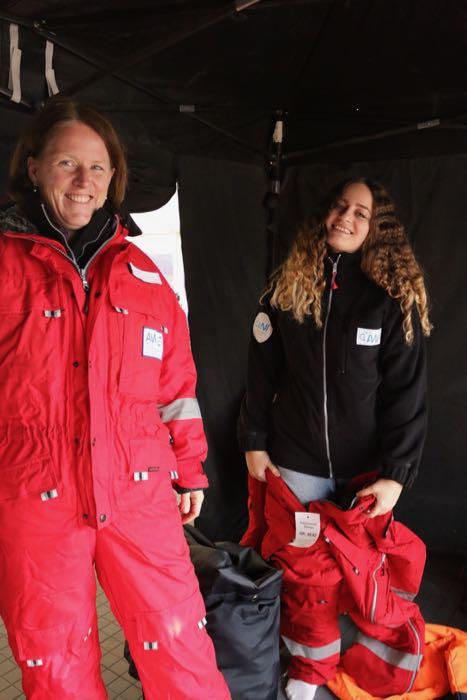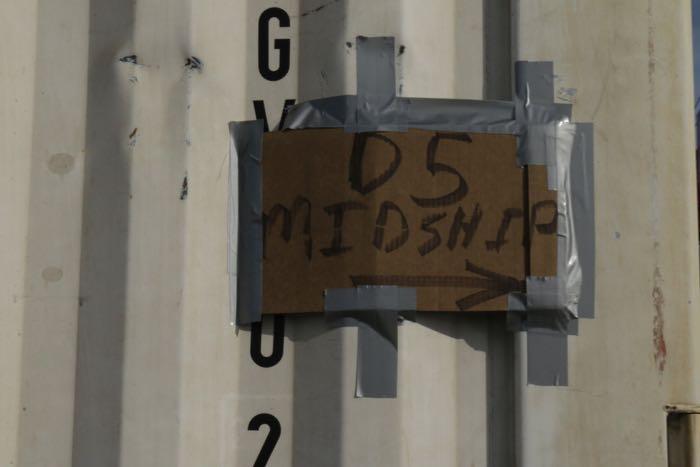This Time Tomorrow
It is one day until departure and we all are scrambling around to finalize preparations. Dozens of giant shipping containers ('conexes') have arrived from science labs around the world. Most have been loaded on the icebreaker Polarstern, but have been waiting patiently on the dock for the icebreaker Federov to arrive. It was delayed, so that added a little extra time crunch to the whole operation.

Imagine lines and lines of shipping containers. Some go on the Polarstern, some go on the Federov. Some go on the aft deck (back), some on the fore deck (front). There are so many that they need to be stacked on top of each other. But some need to be easily accessible, so they must be stacked in a particular order. Some will be unpacked right away and the equipment set up onboard. Others won't be used until later in the journey. Keeping straight which stuff goes where and when must be quite a task!
Not all of us are responsible for making sure critical, expensive science equipment makes it onboard safely. But we are still busy! I've spent the last few days trying to better understand Tromso, the people who live here, and its place in the Arctic. I have much more to learn, but soon will share a journal about the Sami people whose homelands, called Sapmi, encompass Tromso and much of the surrounding area. I want to respectfully acknowledge their connections to these lands and waters.
In addition to that focus, which has taken me all across the city on foot, bus, and taxi, there is much to do. We are trying on gear and equipment. We are packing and repacking and re-repacking our bags. We are purchasing last minute materials. Since I'll be teaching a session on science education methods to graduate students aboard the Federov, I had to buy some markers. And some sticky notes. And some colored pencils. So then there was more re-packing. I bought two books to continue learning about Sami culture, history, and perspectives. So then more re-packing.

And some of us are still figuring out the best option for pee bottles. Yes, you read that correctly! While doing research out on the sea ice, we need to pee in a bottle. Why exactly? I'm not quite sure. Is it to make sure we keep the environment clean and 'leave no trace'? Is it to avoid attracting curious polar bears? Is it to make sure we don't contaminate any of the science? No one wants to accidentally collect pee for their snow samples! Maybe it is because yellow snow just looks gross and isn't great to see in an otherwise spectactular place. Or maybe it is to save us from having to expose too much skin to the cold and wind. I'm not sure exactly why the pee bottle is required. I guess I'm a little too embarrassed to ask why. Eventually, I'm sure I'll find out the reason.
But for now, my task is finding a good bottle - and technique! - for peeing. Keep in mind that I'll be wearing layer upon layer of clothing and gear. It will probably be raging winds and blowing snow the first time I have to take a pee while out on the ice. And anyone who knows me well knows that I pee frequently. Sounds like fun, right?
Not all parts of Arctic research are glamorous! But they are all important for a successful trip. I think the key is having a good sense of humor about it all. If you want to learn more, check out these 10 tips for using the toilet in Antarctica.
Before I could fully turn my attention to the problem of the pee bottle, I needed to get out for one more walk through the forest. Once we get on the ship tomorrow, it will be at least 5 weeks before I walk on soil or am surrounded by trees. For at least 4 weeks, we won't see any trees or plants at all -- not even in the distance! I gathered a little tiny bag of dirt and fall leaves to bring with me. After all, researchers have found bacteria in soil that release compounds that can help to relieve stress. That bag is my medicine! I'm not sure how long these positive effects will last if I keep the dirt in a ziploc baggie, but I'm going to try.
When I leave, maybe someone on the Polarstern will want to adopt my soil and keep it. Lichens have survived being in space. If they can make good 'spaceship pets,' maybe my bag of soil microbes will be the perfect 'icebreaker pets' for someone overwintering out there in the Central Arctic Ocean.
Well, it is time to get ready. Wish me -- and my bag of dirt -- good luck!



Comments